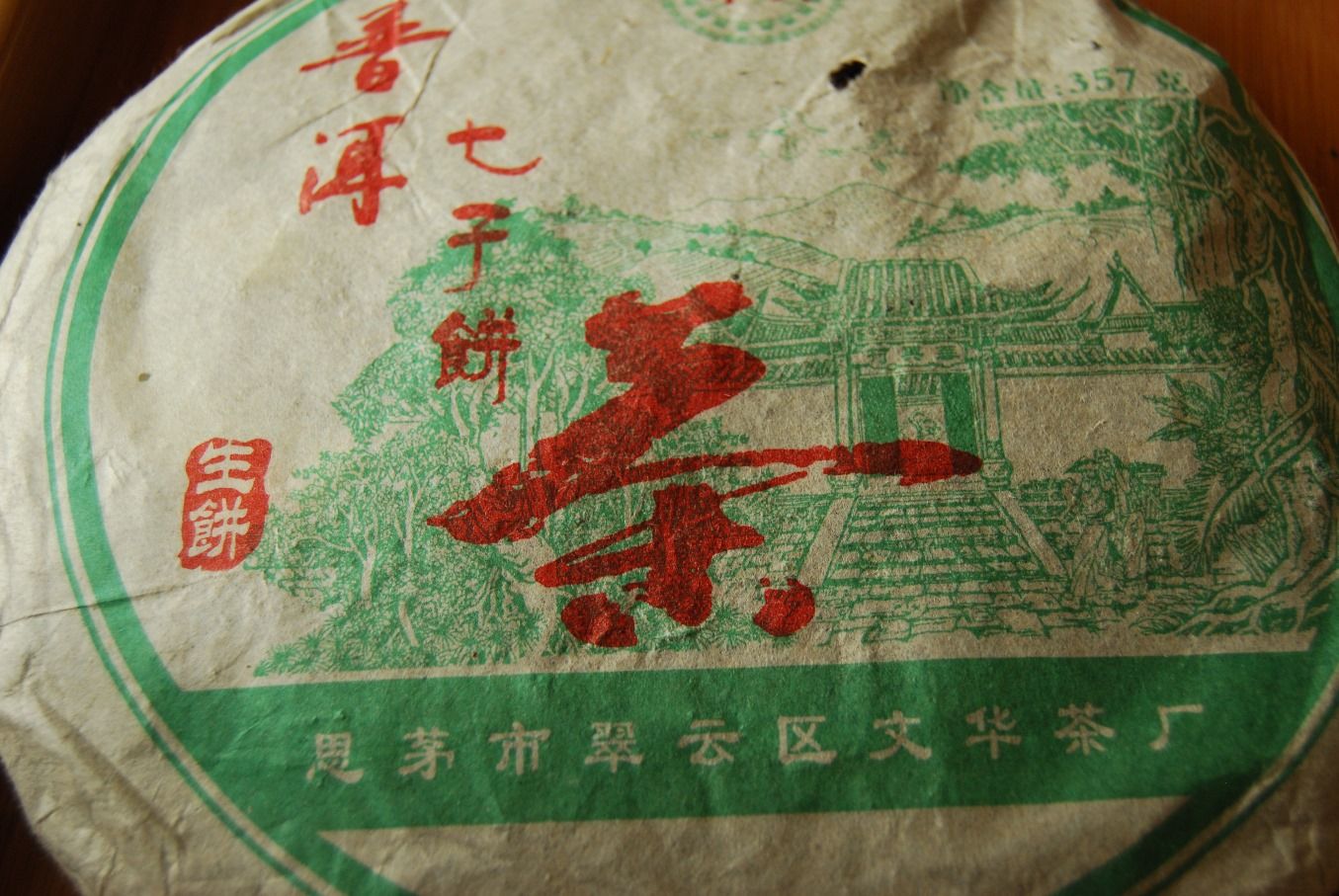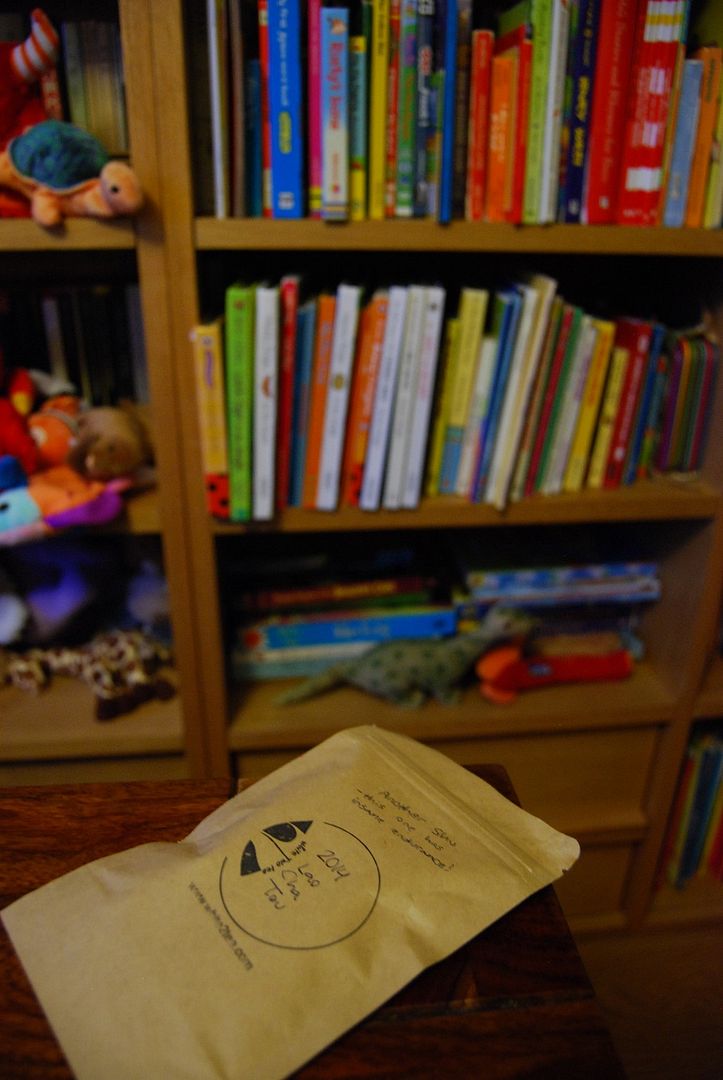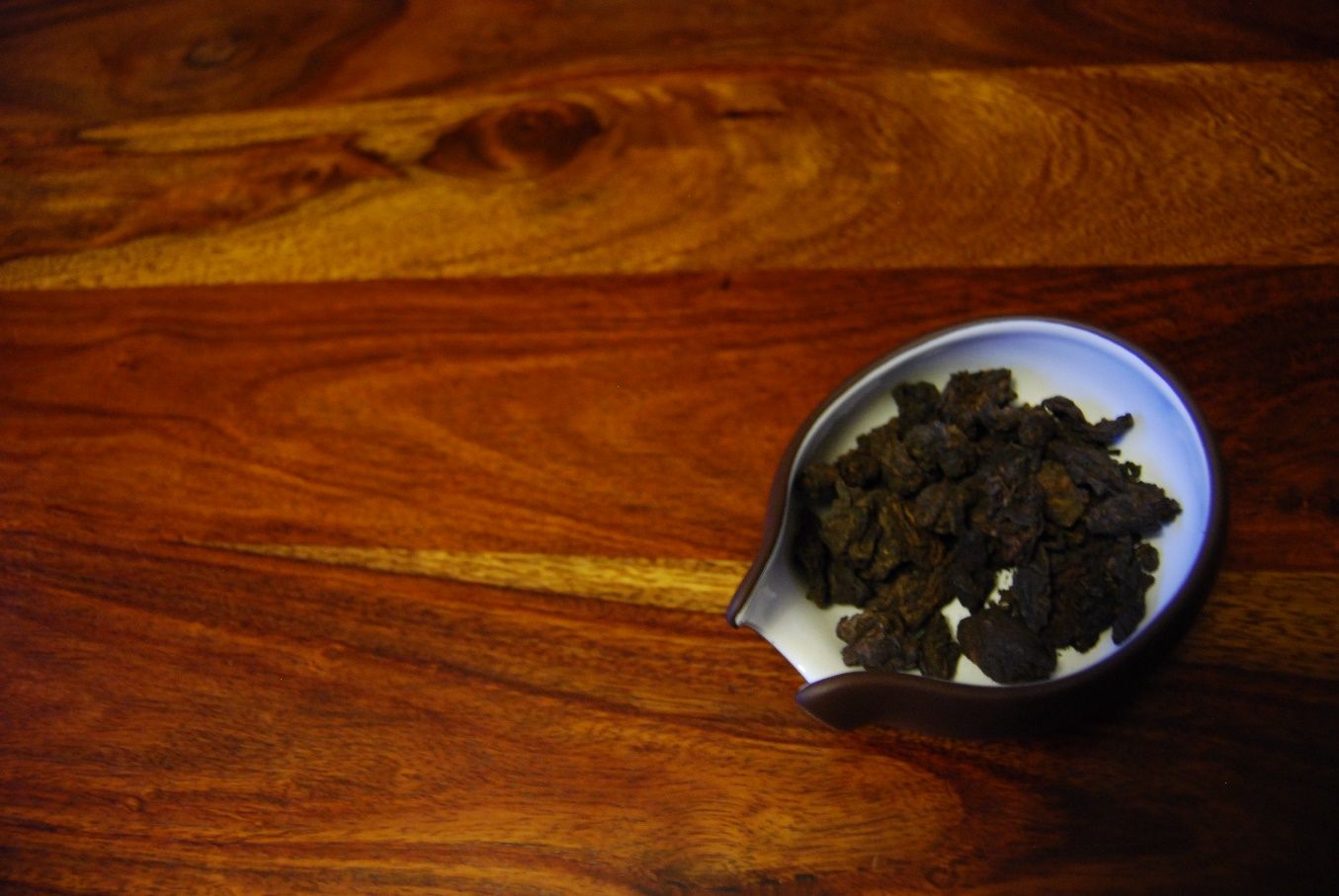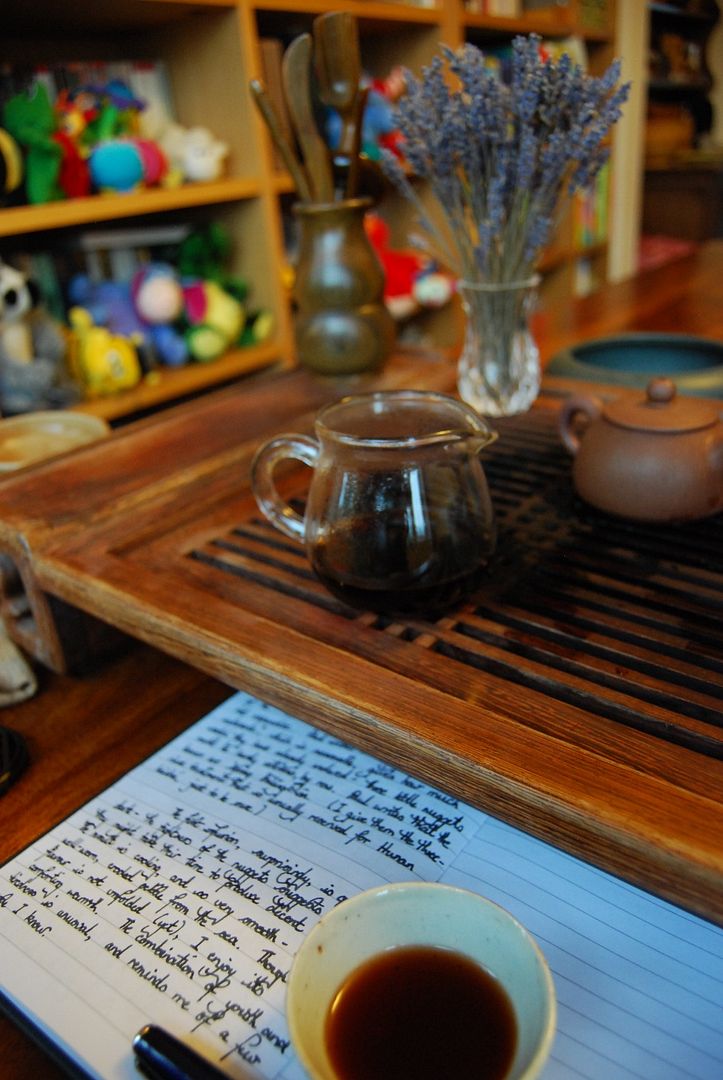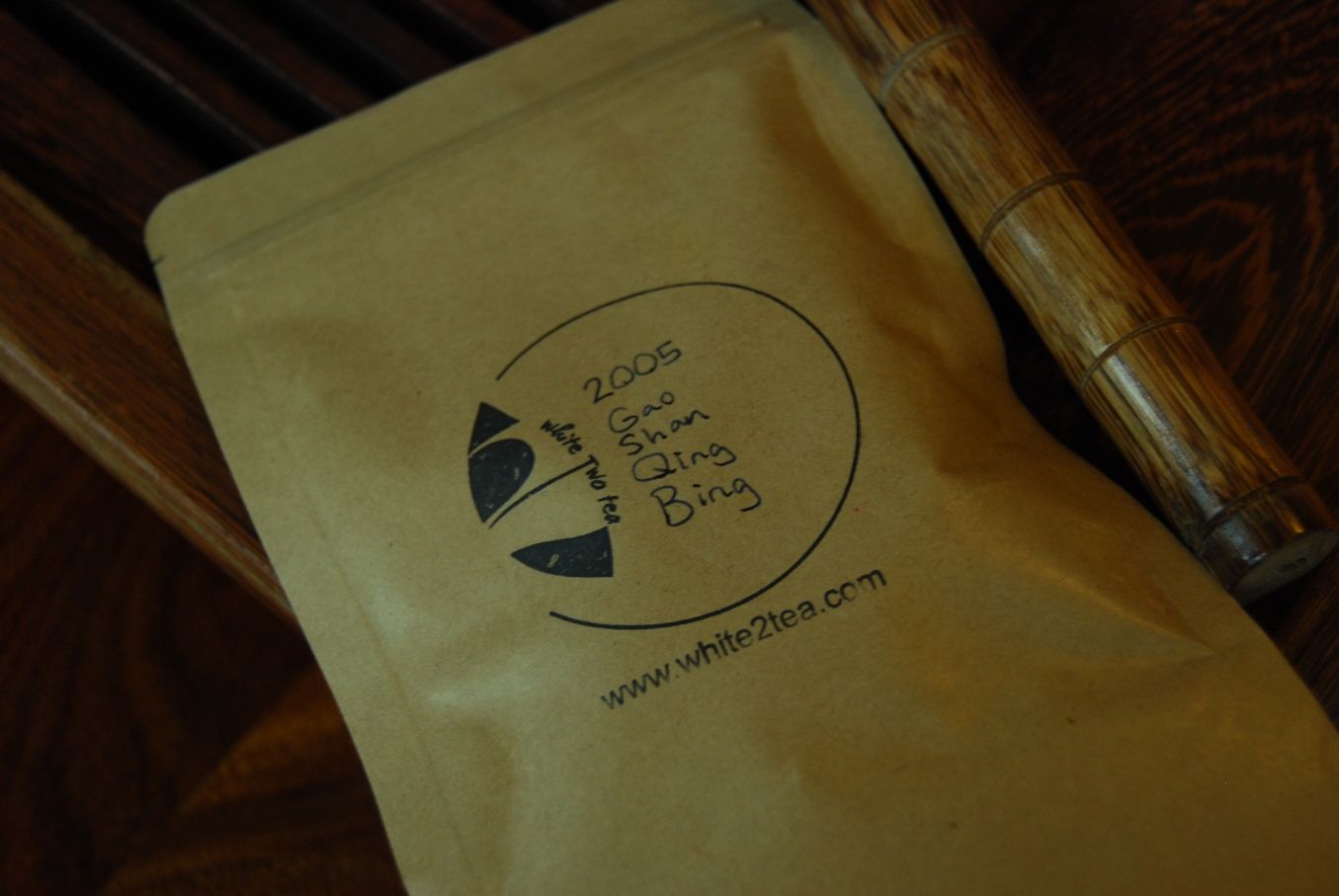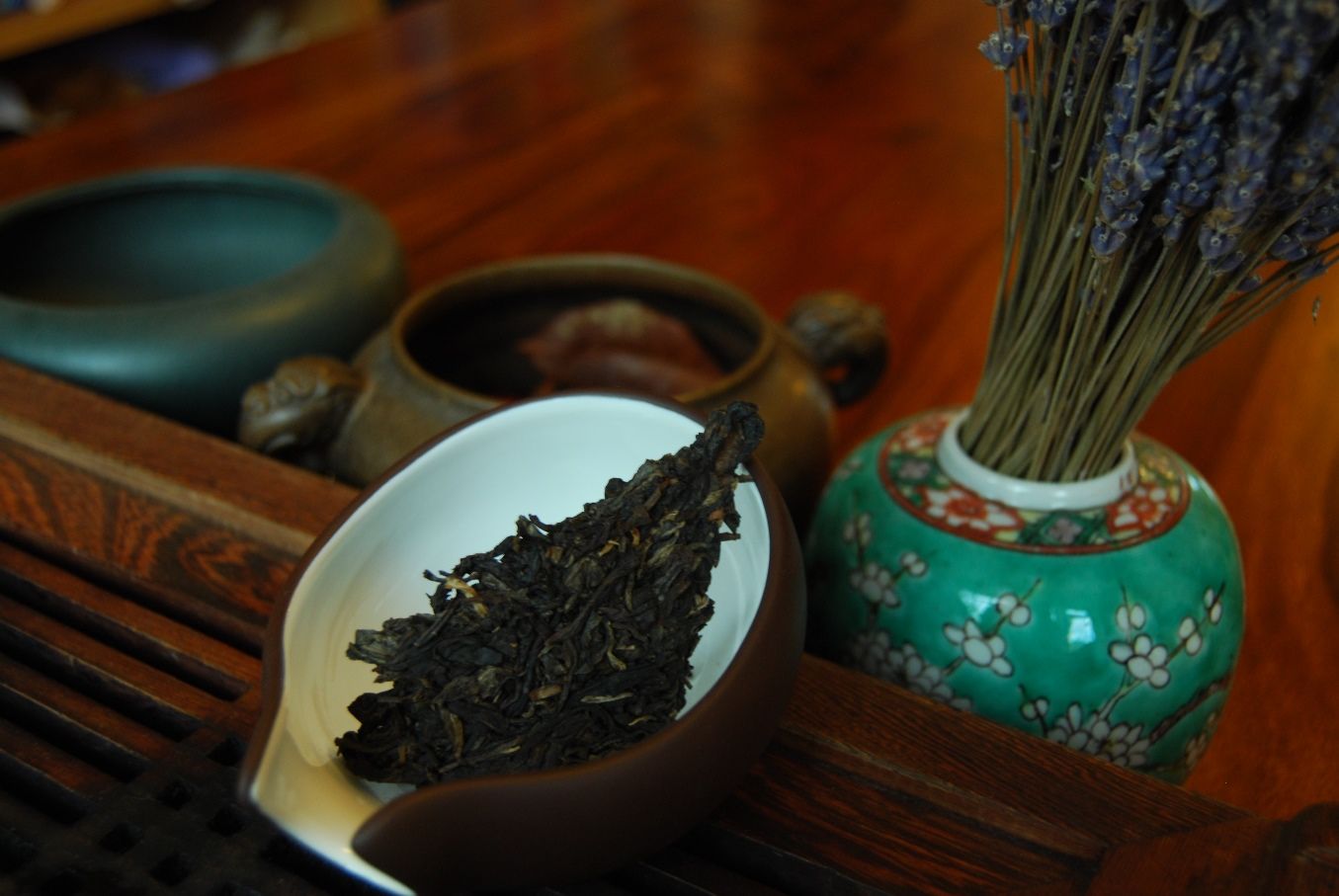These are, it would seem, the first 2015 teas that I have written about on this humble web-site; I have to create a "2015" tag for the occasion. Let's drink some twenty-fifteen!
You know the drill by now: in tea, as in life, I start at the bottom and work up. The least assuming of these three teas is the "Jingmai Natural", which is an amusing name in the sense that the other teas, by implication, are unnatural. The price for this cake is not (yet?) listed at William's web-site, but I imagine it will be lowlowlow, based on previous pricing.
He be selling it low. Low.
It has the smallest leaves of the three samples, and is all sugary sweetness. It is rounded, especially saccharine, and perhaps none too fragrant. It is not by any means complex, but is straightforward and enjoyable. Combined with an assumedly rock-bottom price (the 2014 price was a shocking 7 Euro/200g), this might we worth considering. Nice, probably cheap, I can get behind.
However, for now, we have larger aquatic lifeforms to saute.
...starting with the "Jingmai Single Tree".
This fad for single-trees is all very well, but it doesn't necessarily make for the most complex tea. However, we get ahead of ourselves. The maocha, pictured above, is delightful. The locals have done a good job of removing huangpian [yellow flakes] but the odd stem remains - I am happy to brew the odd stem, by the way.
The soup is the purest, purest yellow. That yellow really is considerably in its purity. It has the buttery, spring-time aroma of good processing and we conclude that all is well in Jingmai residents ability to cook their leaves.
It is vibrant and bitter, but very well-defined in its own way. It has obvious "gushu" flavours, but perhaps reminds me a little of kudingcha: it is 1-dimensional, but that single dimension is most pleasant. And exceptionally pure. Does it leave you wanting more, for all that purity?
The final act is by far the best: the "Jingmai Ancient Gardens".
I'm sure that this will be priced more cheaply than the "Single Tree", but I much prefer it: this "Ancient Garden" tea has a broader base. In tea, as in life, one simply must appreciate a broad, well-defined base.
As with all three teas in this triptych, the leaves are well-preserved and very nicely wok'd through their shaqing [kill-green] process.
Most importantly, this "Ancient Garden" cake is just delicious to drink.
It has the vibrant spring-time freshness of good, young tea. To those HUMBLE MORTALS who maintain that shengpu has to be old before it can be tolerated, I offer a respectful raspberry. This tea has Jingmaishan flavour, but which is entirely complementary to the grassy power of the tea. While grassy cakes might be questionable for aging, this big cake is ready right now: powerful, cooling, and enduring. It is yummy and, in a very real sense, in my tummy.
If this cake sells for a price similar to the 23 Euro of the 2014, it would be foolish of me to miss buying some for immediate consumption. The long hold on my faculties keeps the attention, and the more attention one gives this tea, the better it becomes.
Oh, the wallets, they are a-purchasin'.
my handkerchief jumps
into the lavatory
with a loud flush











